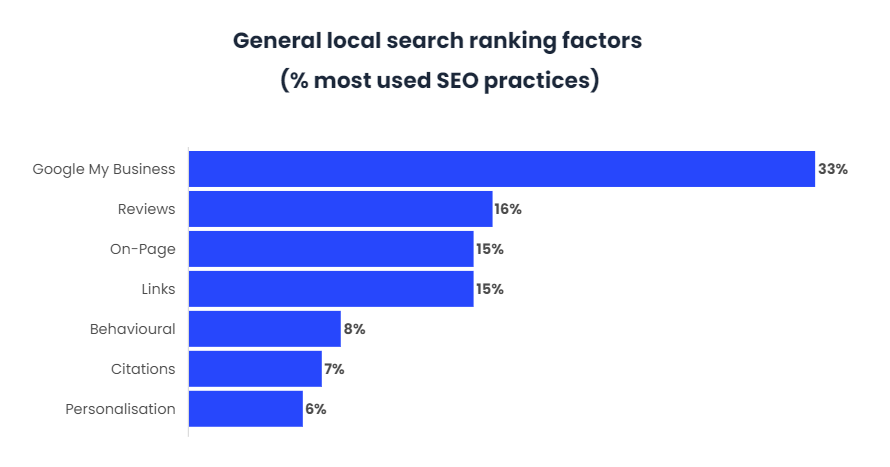How to optimise local SEO and its relationship with voice search?

In recent years, voice search has become a favourite way for users to quickly search for any query on their IoT devices or smartphones. This technology allows searches to be performed by speaking to the devices, rather than having to type in keywords.
Currently, 65% of people aged 25-49 make voice queries via their voice-enabled devices at least once a day. This factor has meant that in the latest models of smart devices, voice recognition has become an extremely accurate and complex provision.
It is also estimated that around 31% of the world’s mobile users use voice search at least once a week, and this is a growing trend, as it is being adopted faster and faster among younger people. The use of this technology is growing, the voice search option is partly due to the fact that voice searches are becoming more accurate; according to Google, its voice searches are 95% accurate.
Therefore, a number of businesses have found an opportunity to improve their marketing through this technology, through the use of the right words to describe themselves or the right way to advertise themselves as a business, it can mean that when a person asks their voice assistant for a particular type of business, it will locate the company that has focused its marketing on voice search.
What is Local SEO?
In order to be able to relate voice search to marketing, it is necessary to understand what local SEO is, since through its improvement the image of a company or enterprise can reach new goals. Thus, local SEO is the optimisation for search engines focused on a certain location, i.e. it is the positioning in the first Google searches for certain locations.
For example, it could be applied to any keyword that can be searched for in Google, such as: software companies in Madrid. Even on many occasions, especially from smartphones, just entering the keyword is enough because Google detects your location without having to type it in.
SEO is a process that affects and influences the visibility of a website in the unpaid results of a search engine, these results are known as natural or organic. Through local SEO optimisation, businesses can stand out from others in searches made from the same location as the business.
Optimising Local SEO through voice search
Typically, many people who use voice search use it to search for local items such as restaurants, gas stations, etcetera. Around 22% of voice search queries search for location-based content. Therefore, local businesses should take advantage of this method to create a local voice search SEO strategy. In this way, businesses’ web traffic will be boosted and, consequently, their sales will increase.
Primarily, to improve local SEO, any company should focus on voice search or standard search to ensure that nearby customers have easy access to company information and are highly likely to find the company through a quick search, whether from mobile devices, smart speakers or tablets.
Below are the different strategies to be considered by a company to improve its local SEO performance:
- Targeting and bidding for “long tail” keywords.
Long tail keywords are keywords that are not searched for as much as more popular terms, usually because they are very specific. Most long tail keywords have a minimum of three words.
Long tail keywords are just as effective in voice search as they are in conventional searches. They are generally much more specific terms than conventional searches.
The additional advantage of using them for voice search is that they are more in line with the way people speak and are therefore more likely to match a voice search query than a common short tail keyword.
- Optimisation for specific search engines
Basically, Google dominates the search engine market by far from the rest, so it is not advisable for companies to try to optimise their content for very specific search engines.
Trying to focus content for a single search engine does not have much effect on the results, and Google will continue to set the standards for search engine function.
It is best to create excellent, simple and optimal content that, combined with properly researched SEO measures, will result in the company appearing in both standard and voice searches.
- User intentionality in voice searches
The company must be clear about the user’s intention and objective when searching. In this way, the situation can be addressed by anticipating frequently asked questions and generating optimal answers to those questions.
The essential information of any company should be simple and easy to analyse by Google’s algorithms. The best way to simplify these aspects is to consider common elements such as company addresses, shipping policies or simplified product details. Then create content that a voice search can easily display and recite.
- Use schema metadata
Today, there are tools on the market that will make companies’ content even easier for Google to understand and rank. These tools work by creating metadata about the content that describes the company’s website and its uses. They are very useful SEO tools that are underutilised and can put any company at the top of any search. For example, Schema is one such tool.
- Update Google My Business listing
Having an updated Google My Business listing will give every company an advantage when it comes to voice search, as having the most complete business information makes a website more relevant to users, and therefore will rank higher in search results, where any voice search application is more likely to locate it.
- Using Google Maps local search ads
This type of local search ads on Google Maps are an effective and appropriate way to attract the attention of local customers, the company’s ads will appear as organic results on all platforms. For example, when a user searches for a clothing shop on Google Maps, they will be able to see the site indicated by a purple icon over the clothing shops advertised near them. In addition, location items and company information, such as opening hours and reviews, among others, will be displayed.

Conclusions
The advent of voice assistants such as Siri or Alexa has taken marketing strategies to another level, as voice searches are performed by millions of people every day. This technology is based on artificial intelligence and can receive answers without touching or approaching a device.
In such a way that it has recently been shown that taking advantage of this voice recognition technology is a good strategy to include in the marketing of companies, so that the content of searches is optimised and businesses can appear among the first options when the user asks the assistant a question.
This result can be obtained by optimising and improving local SEO, i.e. trying to appear among the first options for businesses within a given area. To do this, the description of the product that a company sells must be properly written so that it is easy to interpret and locate by the AI algorithms used by these devices.
Obviously, this causes a change in how content marketing will sound, as how humans write is not exactly the same as what they say with their voice. With voice search optimisation, companies must ensure that their content adapts to natural language.


